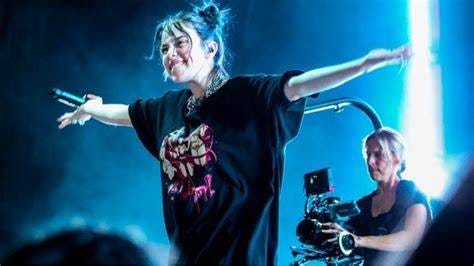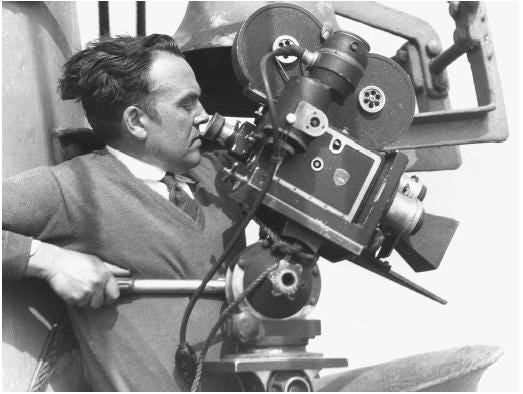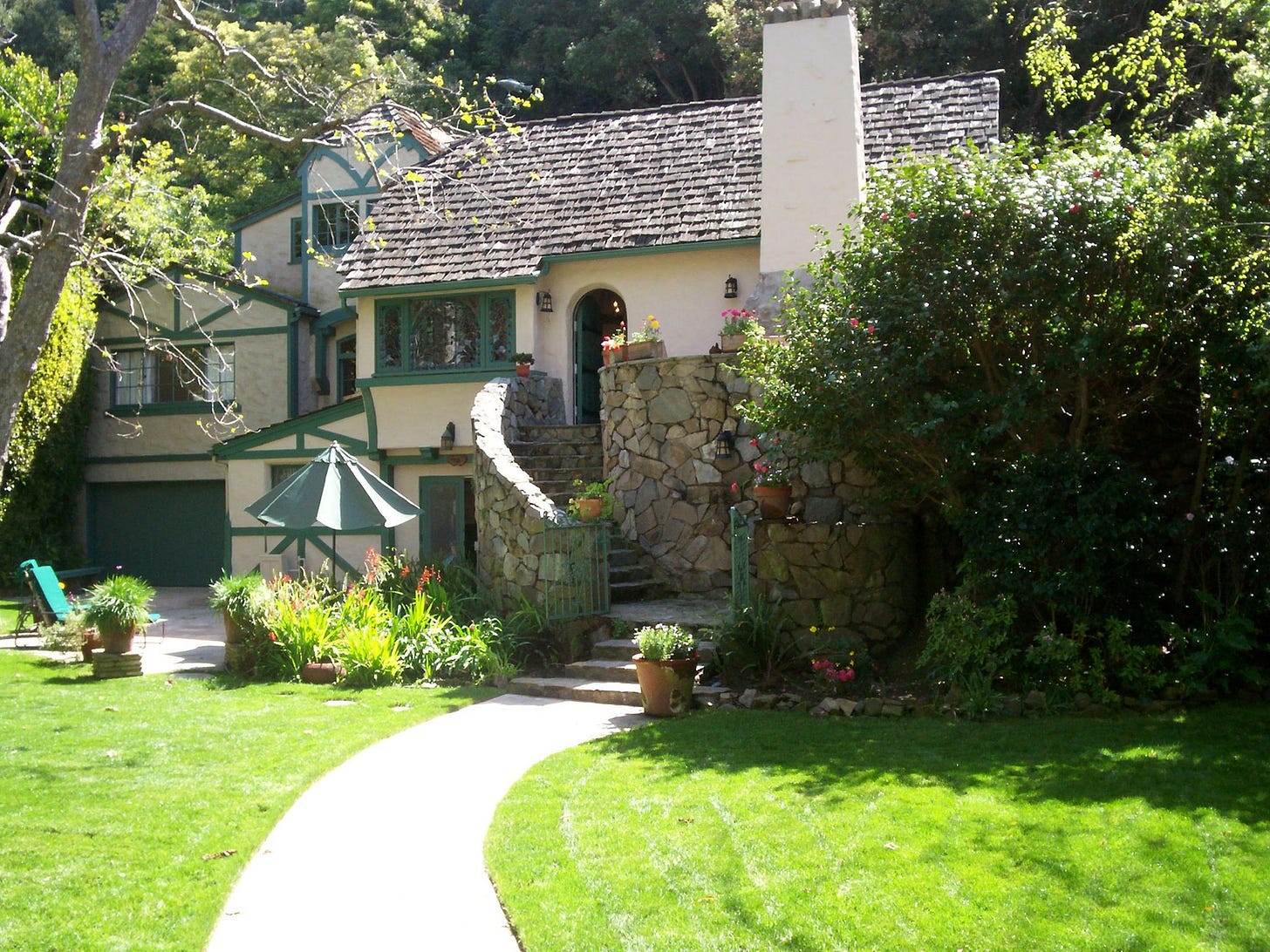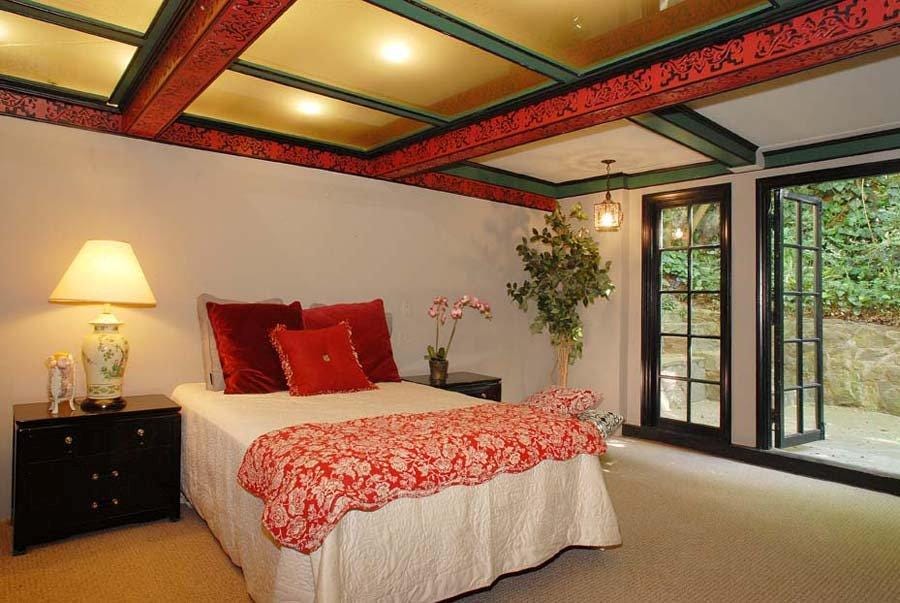The Cinematographer’s Granddaughter
Hollywood folklore, family legacies & Oscar-hunting with Jenna Rosher
Jenna Rosher is a documentary cinematographer and the third generation in her family to go into the filmmaking business. For more than 20 years, she has combined her love of people and storytelling into directing and filming a wide variety of social, political, and music documentaries for television and film. Her award-winning projects have been featured on every network and streaming service you can think of, including Netflix, HBO, Hulu, PBS, CNN, Nat Geo, BBC, and Sundance Channel, just to name a few.

Her grandfather, Charles Rosher, was a pioneer of cinematography in early Hollywood. He was also one of Anna May Wong’s lovers, which is how I first connected with Jenna. When I was researching the period of Anna May’s life right before she left for Europe, Jenna was gracious enough to entertain my questions and share some of the stories that had been passed down to her about her grandfather. Charles Rosher had quite the career, and his time studying cinematography in Germany during the Weimar era likely influenced Anna May’s decision to sail to Berlin in 1928.
Jenna and I recently had a chance to revisit some of her grandfather’s cinematic exploits and discuss the ways in which she has carried on the Rosher family legacy.
Your grandfather, Charles Rosher, won an Oscar for Best Cinematography for his work on the film Sunrise (1927) at the first ever Academy Awards ceremony held in 1929. At what age did you begin to realize your grandfather was an important figure in early Hollywood? Were there stories about his career that were passed down in your family?
I think I became aware of him during college where I studied journalism and film. I began to see his name in text books and realized that he was quite the pioneer. He achieved the first elaborate tracking shot in Sunrise which I find boldly inventive. I became more and more curious about him, doing my own research, speaking to my grandmother and father, trying to absorb every detail of his life and career, which was quite extraordinary. My dad would tell stories of being on Clark Gable’s boat with my Grandad and hanging out as a child at the American Society of Cinematographer’s Clubhouse. It was such a tight-knit community back then. My grandmother would complain of him leaving at a moment’s notice to meet with a starlet about her next picture. Back then, who was shooting your picture was almost more important than who was directing.
Charlie (if I may) and Anna May Wong worked on a number of films together in the 1920s. Around the time he was working on Sunrise, they reconnected and started up a romance. He was 41, she was 22. In many ways, your grandfather was just Anna May’s type—older, artistic, and adventurous. It probably helped that he also had a British accent. Can you tell us about some of your grandfather’s exploits? I’m thinking in particular of his time filming Pancho Villa during the Mexican revolution!
Yes, one of my favorite stories was during the filming of Life of Villa. They decided to film much of the b-roll during the actual Mexican Revolution. So there was my Grandad with his camera on the back of a horse-drawn carriage with bullets passing every which way. The war proved to be pretty brutal as he was captured by Villa’s enemy forces and almost put to death. Lucky for him, his captives caught a glimpse of the Masonic pin on his lapel. He went from being a POW to a guest of honor and was returned safely to Hollywood. How’s that for a Hollywood ending!
In the many decades since Charlie and Anna May’s affair ended, their romance has become the stuff of Hollywood legend (which I write about in more detail in my book). At the time, Charlie lived in a kind of fairytale bungalow in Rustic Canyon in the Pacific Palisades, where he was also a member of the Uplifters Club—a rowdy group of influential men from movies, business, and politics. According to local historians, your grandfather dedicated an entire room in his house to Anna May and had it decked out in chinoiserie. When we first connected, you told me about visiting the house as a teenager. Could you relive that moment for us and tell us what it was like seeing that special room? Did you know anything about Anna May Wong at the time?
I didn’t know anything about Anna May Wong until we visited the home. I remember the moment so vividly. My dad decided to take my stepmom and I on a trip down memory lane. As we arrived in Rustic Canyon, I could sense there was something uniquely special about this little canyon neighborhood within minutes of the Pacific Coast. My dad excitedly narrated the journey, recalling his favorite bike routes and the proximity of his childhood friends’ homes.
We parked in front of his former home and noticed that the current owner was out front. As I recall this moment now, the timing of it all feels quite magical. It felt like he was expecting us. As we approached him, my dad excused us for staring at the property and explained that he had grown up there many years prior. Without hesitation he replied, “Are you the son of Charles Rosher?” We were floored. My dad, being a junior, replied proudly, “Yes! I’m Charles Rosher Jr., I’m his son.” A mutual joy washed over the moment as the homeowner said to us with a slight chuckle, “I have something to show you.”
He took us down to the basement level of the bungalow-style home and walked us into the fully preserved room that my Granddad had dedicated to Anna May Wong. The room was minimalistically decorated with a Chinese black lacquered post bed and armoire and accented with beautiful Chinese brush-painted art on the wall. We were speechless, the room was frozen in time. You could feel the essence of Anna May’s presence and the relationship she shared with my Grandad. It was an unexpectedly meaningful moment between complete strangers, indulging in a bit of Hollywood folklore. I can’t recall whether the room was just as my Grandad had left it or whether it was more of a dedication to Anna May. Either way, it was an experience I will always cherish.
It’s clear that cinematography runs in your family—your grandfather and father were both DPs and you’re the third generation to carry on the profession. Was the moviemaking business a big influence on you growing up? How did you end up becoming a documentary filmmaker?
I had the great pleasure of joining my dad and my mom (who was an actress) on many sets as a child. I appreciated the seamless orchestration of people that come together to tell stories. From the time I was an early teen, I had expressed an interest in cinematography and my dad went out of this way to introduce me to several female DPs, including Brianne Murphy, ASC.
After graduating with a degree in journalism, I began to pursue nonfiction storytelling. I would say my career started back at MTV News and Docs in the 90s, where I was encouraged to direct, shoot, and edit. It was an incredible time in storytelling and the technology of cameras in particular was evolving fast. They became smaller and easier to use as a solo operator, giving me intimate access that would have otherwise been more challenging with larger cameras.
The first feature I shot was a film called Jesus Camp, about an evangelical summer camp for kids. That film marked the beginning of my career as a documentary cinematographer. I often think that there was a bit of a documentarian in my Grandad as well when you consider him filming Life of Villa. He was capturing a real life battle, putting his life on the line to get realistic footage of the Mexican Revolution. When I’ve been in challenging environments while filming docs (not a revolution of course!), I often think of him in that moment. And while I never had the chance to meet him (he died a year after I was born), I’ve always felt a deep connection to him.
The last time we were in touch, you mentioned trying to track down your grandfather’s Oscar, which had gone missing over the years. Did you end up recovering it?
Yes! I have much to report on that search. I learned his Oscar for Sunrise was donated to the Academy of Motion Picture Arts and Sciences by Kevin Brownlow, a leading UK silent film historian. I met Brownlow for lunch back in 2022 while I was filming a documentary in London. Brownlow knew my Grandad quite well and shared some wonderful tales about the times he shared with him on and off set. I asked him about the whereabouts of my Grandad’s second Oscar that he won for The Yearling back in 1946. He connected me to the daughter of the late National Film Archive caretaker Frank Holland.

My Grandad had evidently gifted the Oscar to Holland many years ago. I think he had a fondness for historians and archivists and I imagine he felt it would be cared for long after his passing. I met Holland’s daughter Kathryn in her idyllic English village home. She told me that “Oscar” (as they had affectionately referred to the statuette), was not only serving as a convenient doorstop, but was held by many folks over the years who had little or nothing to do with Hollywood. It warmed my heart learning that it had served a functional purpose (it’s quite heavy after all) but more importantly I loved the notion that it gave people far away from the film business a little taste of Hollywood history. Kathryn and I are still very much in touch and “Oscar” now sits proudly in my living room in Los Angeles.
You can learn more about Jenna Rosher’s work on her website.
Updates in Brief
Have you ever wondered about the places Anna May Wong frequented around Los Angeles and wanted to retrace her footsteps? If so, you’re in luck. For the last few months, artist Christina Chung and I have been working together on bringing AMW’s Los Angeles to life on this gorgeous postcard. Of course, most of the credit goes to Christina and her brilliant illustrations! Right now I’m giving the postcard away to anyone who subscribes to this newsletter (that means you!) and follows my Instagram accounts @kayteesal and @annamaywongbook. Enter by January 31 here and I’ll send you a postcard in the mail!
In other giveaway news, Goodreads is giving 20 hardcover copies of Not Your China Doll away to 20 lucky winners. Enter the drawing by February 7 here.
Finally, in case you missed it, Rebecca Grace Lee and I hosted a live Q&A last weekend. We had so much fun answering audience members’ questions—and they were such good questions too! You can watch the replay on YouTube.











Wow!